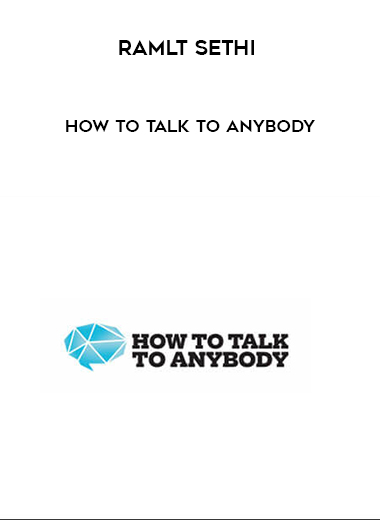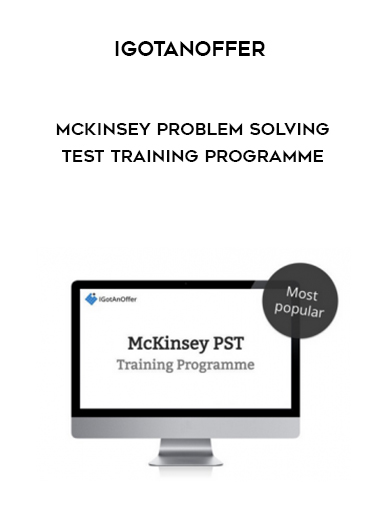
Ramlt Sethi – How to Talk to Anybody
26 Videos – MP4,13 Audio – MP3,21 Ebooks – PDF
|
I was expecting the course to cover some advanced social skills but it’s really just basic stuff. If you’re the extremely introverted type and you would like to improve your social life, How To Talk To Anybody by Ramit Sethi might offer some useful tips.
Course Notes:
The following notes from How To Talk To Anybody by Ramit Sethi are meant to be concise, reminding me of high-level concepts and not trying to recreate the whole course. This summary is basically a bunch of notes and lessons paraphrased or quoted directly from the course and does not contain my own thoughts.
MODULE 1. SMALL TALK
Body Language: How to Become 10x More interesting without Changing a Word
• The SETHI technique:
- Smile: practice smiling even if it feels unnatural or fake. And every time you greet someone, smile.
- Energy: add vocal variety to your voice.
- Talk slower.
- Hands: experiment with them.
- Eye contact: watch as other people who make you (or others) feel comfortable do with their eyes.
• Work on each one of these piece by piece. For example, try 10 days for smiling, then 10 days for energy, etc.
How to Get Over Being Shy
• The Game Technique: instead of thinking about the technicalities, try to make it into a game by:
- 60 seconds rule: whenever to any place, walk and introduce yourself to someone.
- Compliments: do this three times with 24 hours (ex: I really like how fast you made that coffee).
- Curiosity questions: also three times within 24 hours (ex: What book is that?).
• Fake it till you make it: really think about what kind of person you want to be perceived as and practice being that person.
• The 3x rejection rule: actively seek failure to make sure you’re getting a lot of practice.
Mastering the Art of Talking to Anyone
• Keep testing your body language and energy.
• Pay attention to people’s reaction to what you do and adapt.
MODULE 2. ONE-ON-ONE CONVERSATIONS
Get People to Like You
• As you advance in your career or to advance in your career, your social skills matter more than your technical skills. You can apply these strategies to become more likable:
- Be non-needy: do not brag; instead, have an abundance mentality.
- Show them they earned your like: do this by authentic compliments.
- Avoid asking too many questions: a good rule of thumb is trying to add statements or express something after your question that the other person can ask a question about.
Never Run Out of Things to Say
• keep a question toolbox:
- What made you decide to do …?
- What was the biggest challenge when it came to …?
- If you had to do … again, what would you do differently?
- As you gained more experience in …, what became more important in …?
- What’s been your favorite part about …?
• Don’t be shy to give your own opinions.
• Talk about yourself: your background, your family, your work, your challenges, etc. Just make sure you don’t monopolize the conversation.
How to Tell a Great Story
• Keep a story toolbox: create something where you can keep your stories.
• Write it out: decide what to keep and what to leave out.
• Have a point.
• Practice: record and listen to yourself, and watch yourself in front of a mirror. If you have a camera then that’s even better.
• Use feedback: listen and watch for feedback to tweak your stories for the better.
MODULE 3. GROUP CONVERSATIONS
How to Stand Out
• Get proactive: always prepare what to talk about beforehand.
• Engage everyone.
• Use the location as a prop.
Join Group Conversations
• Breath of fresh air: this is a mindset that you should have. It will allow you to have confidence when joining a group conversation.
• Ask for clarification.
• Self-deprecation: just don’t do it too much.
Make Them Remeber You
• Get proactive: always take a few minutes to think about what you can talk about, what’s in the news, what’s trending, what people want to talk about in a certain setting, etc.
• Specific suggestions: try to give suggestions, people don’t like to choose.
• Include everyone.
MODULE 4. WORKING A ROOM
How to Handle Awkward Moments
• Whenever you find yourself in a difficult situation, use the A.W.K framework:
- A: apologize once;
- W: “Well-I’m-an-idiot” smile;
- K: keep going.
• To avoid awkward silences, try not to be in them in the first place by letting other people lead the conversation, too.
Properly Introduce Yourself
• Get proactive by introducing yourself. Do not wait for others to come to you.
• Prepare for the three common questions:
- What do you do?
- Where are you from?
- Who do you know here? How do you know them?
• Leave a little bit of mystery.
• Speak in hooks.





![[Audio Only] CC19 Workshop 15 - Advanced Relational Life Therapy (RLT) - Terry Real](https://intellschool.info/wp-content/uploads/2022/02/ajHcWg3pZEWoZ4CLN52R4A-200.jpg)




























Reviews
There are no reviews yet.